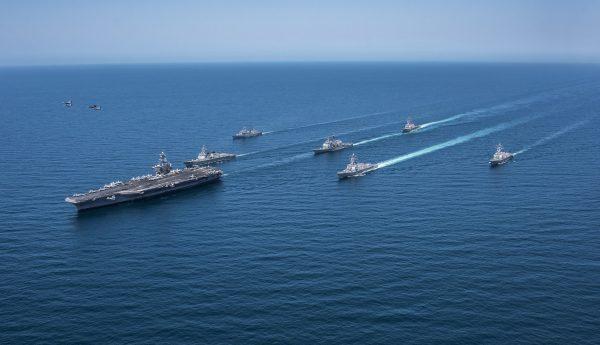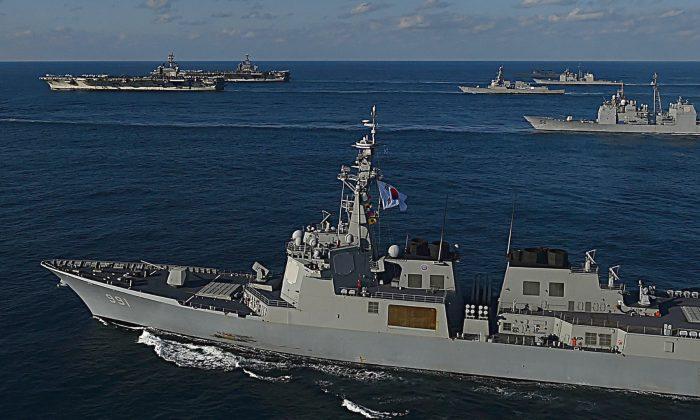SEOUL—A Japanese patrol aircraft made an “intimidating” pass over a South Korean warship on Jan. 23, in what South Korea’s military said was a “clear provocation” toward a friendly neighbor.
The aircraft made its flight just over the South Korean navy vessel in waters off the southwest coast of the Korean peninsula, even after the aircraft determined the ship’s identity, the South Korean military said.
“Today’s low-altitude flight was a clear provocation against a ship of a friendly country, and we cannot help but doubt Japan’s intentions and strongly condemn it,” General Suh Wook, of South Korea’s Joint Chiefs of Staff, told a news briefing.
South Korea’s defense ministry said it called in a defense official from Japan’s embassy to lodge a protest.
“If this behavior is repeated again, we will sternly respond according to our military’s rules of conduct,” Suh said.
Japanese government and defense force spokesmen were not immediately available for comment.
South Korea’s Yonhap news agency quoted Japan’s chief cabinet secretary, Yoshihide Suga, as saying he was aware of the South Korean announcement and it was important the two countries maintained communication.
The two U.S. allies share a bitter history that includes Japan’s 1910-45 colonization of the Korean peninsula and the use of comfort women, Japan’s euphemism for girls and women, many of them Korean, forced to work in its wartime brothels.
The rows over wartime history have long been a stumbling block for relations between the neighbors, sparking concern about regional efforts to rein in North Korea’s nuclear program.

Wednesday’s encounter follows a December feud over a Japan complaint that a South Korean destroyer locked a targeting radar on a Japanese surveillance plane.
South Korea denied it, saying the plane needlessly approached the ship, which was on a normal rescue mission.
There have been two other flights by Japanese aircraft near South Korean vessels since Friday, which prompted a South Korean request to Japan to stop such incidents, Suh said.
Defense officials from the two sides have been meeting but Japan had decided to halt the talks, Japanese media reported on Monday.
The two countries’ foreign ministers are due to meet later on Wednesday on the sidelines of an international conference in Davos, Switzerland.






Friends Read Free